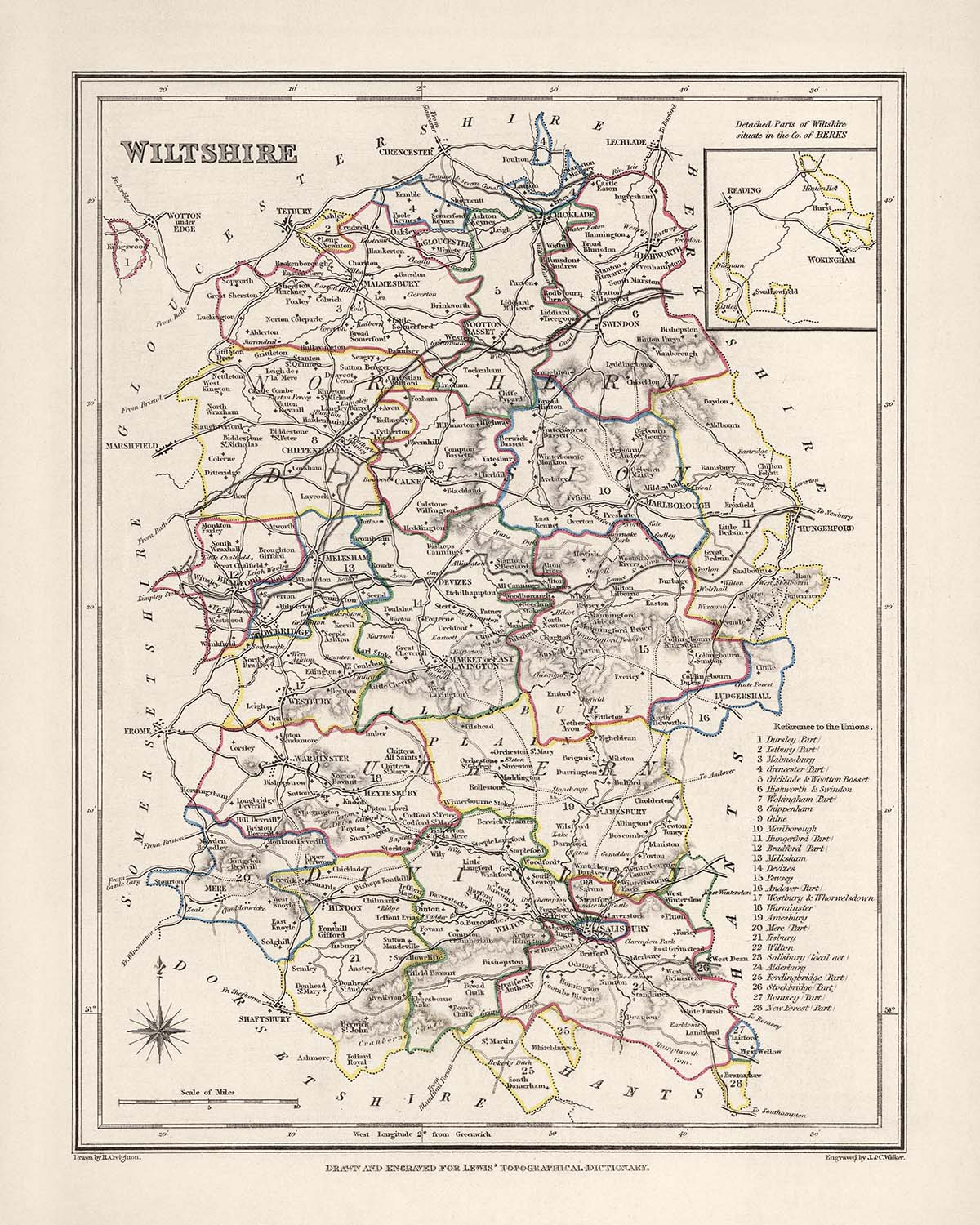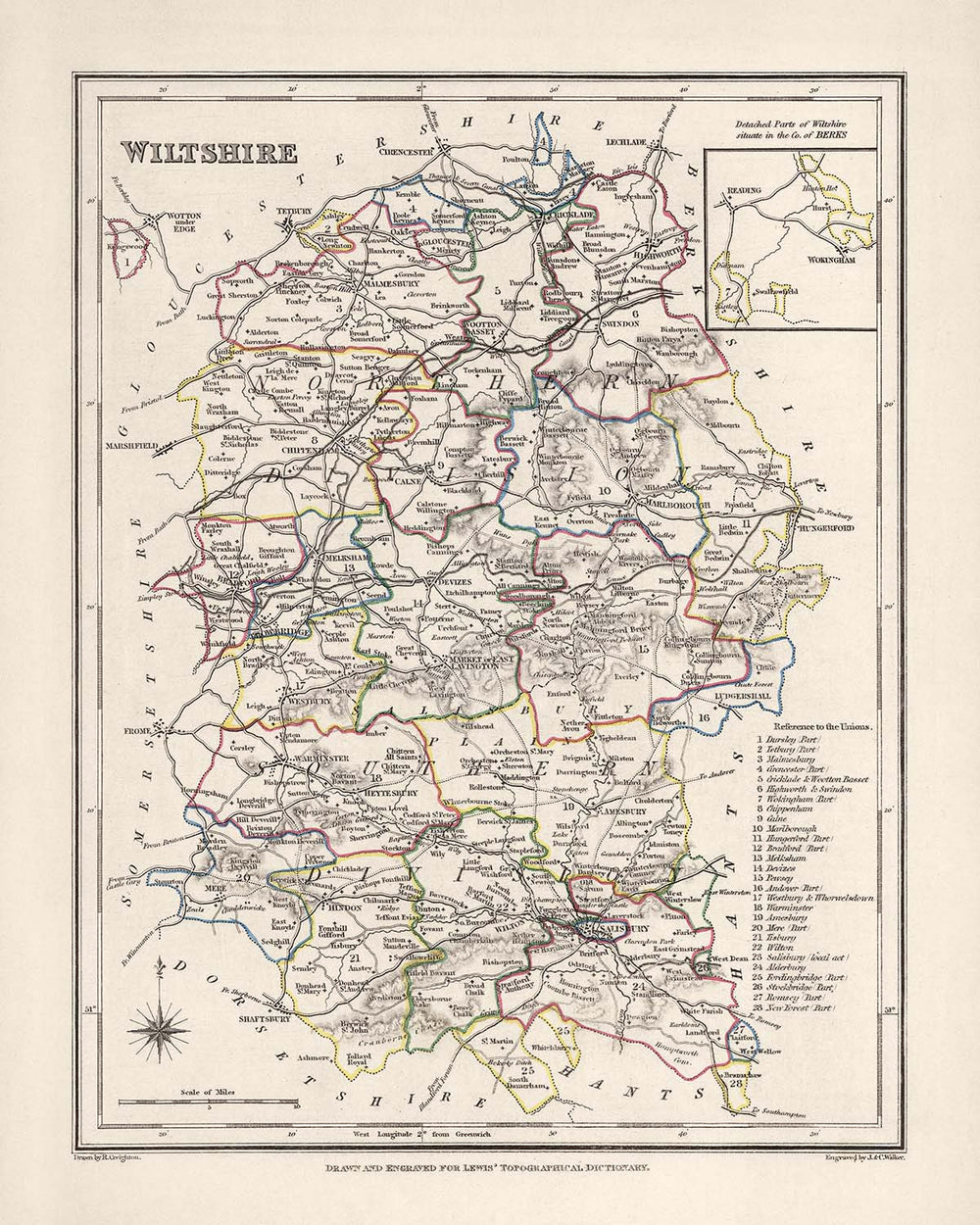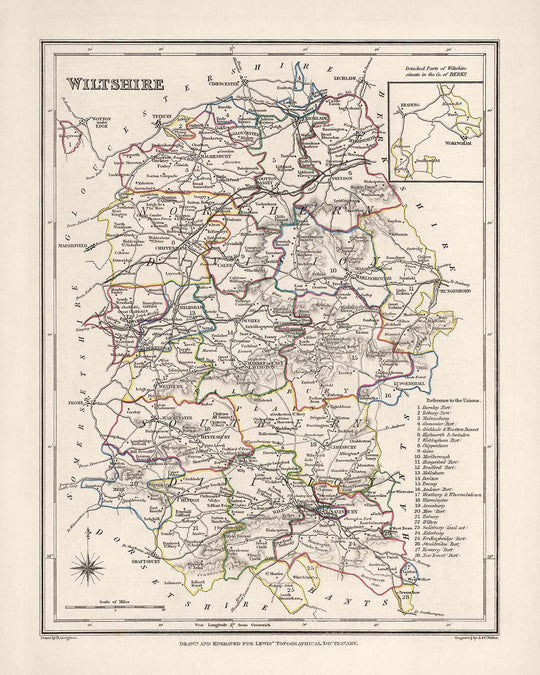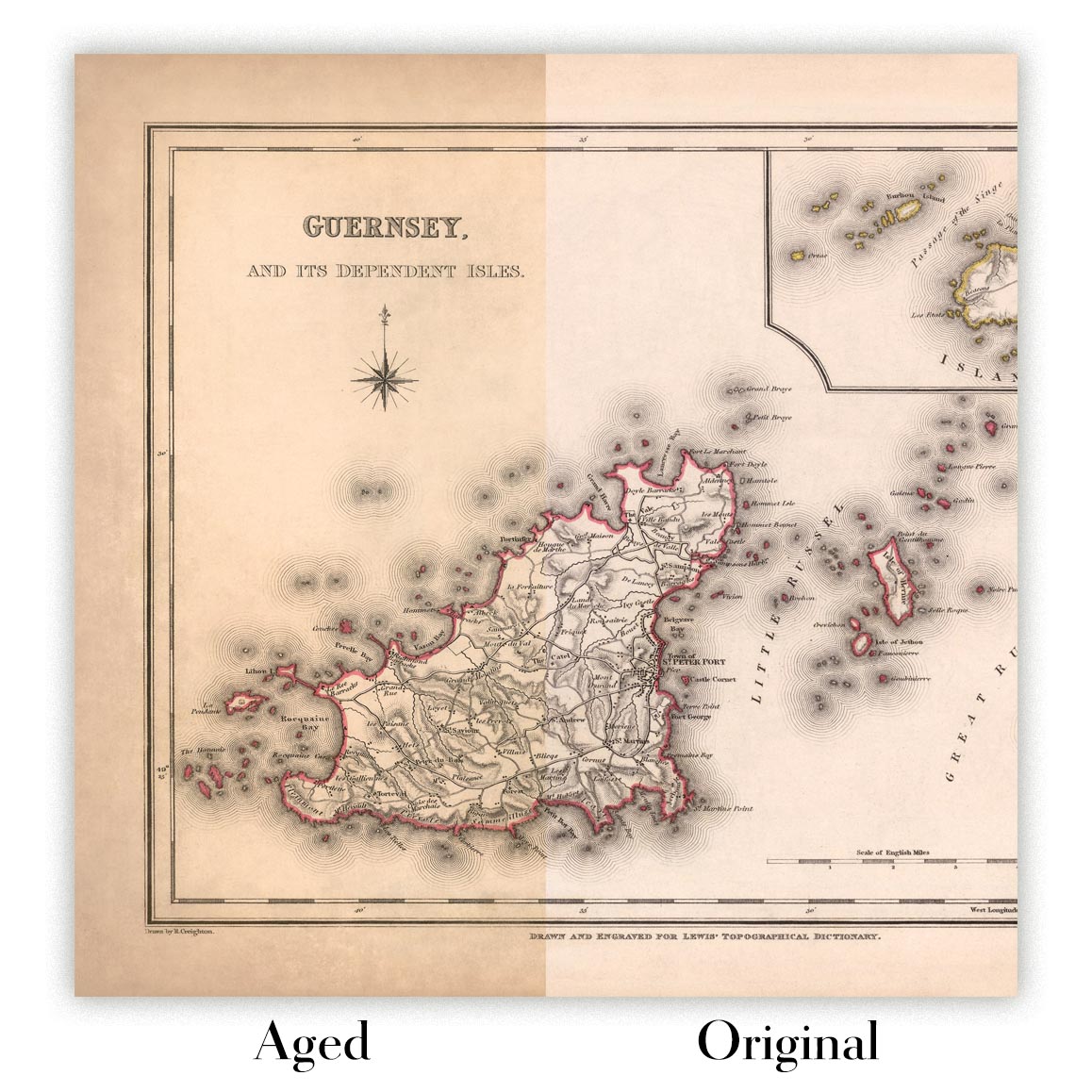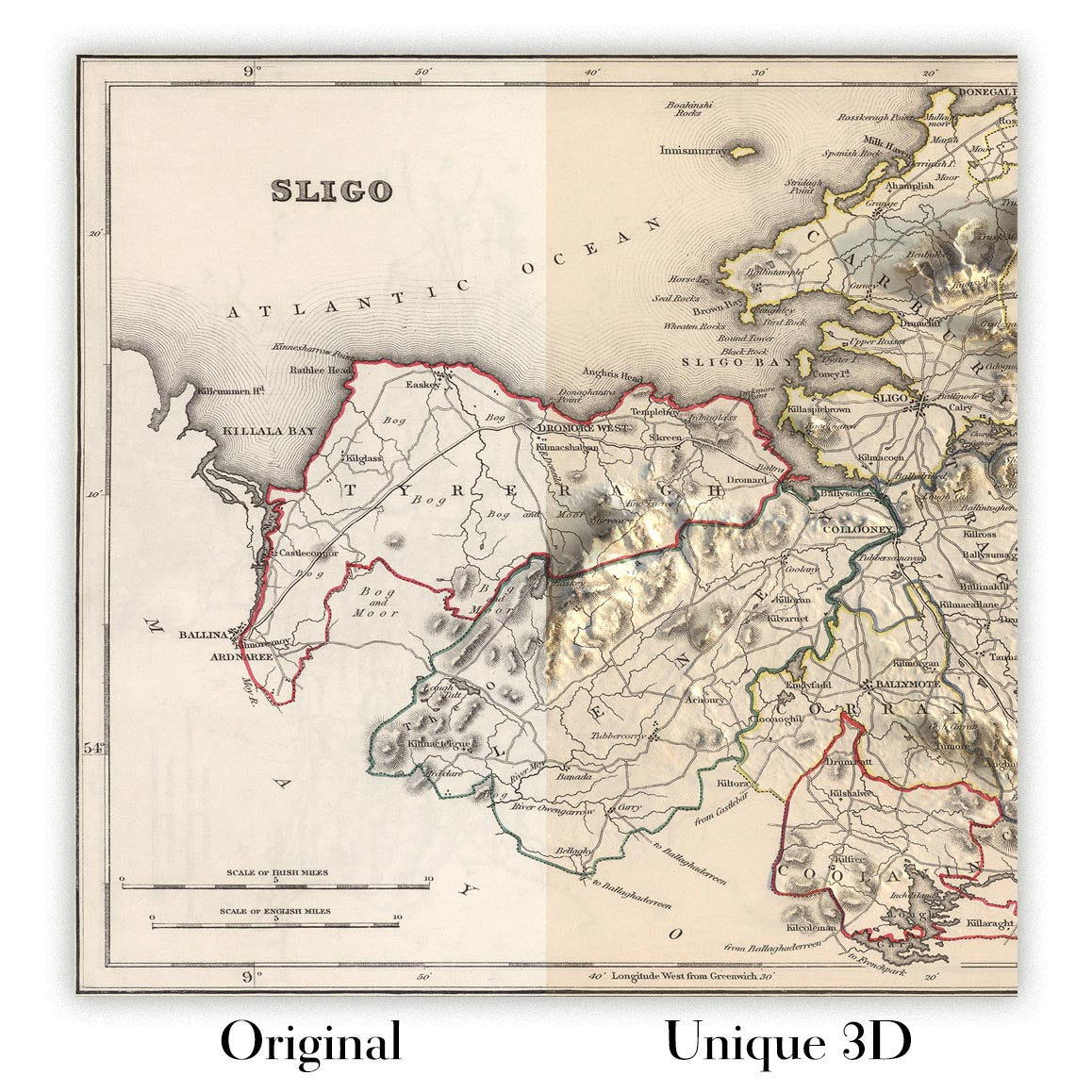- Handmade locally. No import duty or tax
- FREE Delivery by Christmas
- Love it or your money back (90 days)
- Questions? WhatsApp me any time
Own a piece of history
5,000+ 5 star reviews


This Old Map of Wiltshire, created by Samuel Lewis in 1844, offers a fascinating glimpse into the historical landscape of the county. With its intricate details and exquisite craftsmanship, this map is a true collector's item for history enthusiasts and map aficionados alike.
Featuring the County of Wiltshire in the mid-19th century, this map showcases the region's main towns, cities, and other captivating features. It is important to note that while some modern cities may not be depicted on this map, it provides a unique opportunity to explore earlier names and settlements.
Notable for its historical accuracy, this map allows you to immerse yourself in the past and discover the rich heritage of Wiltshire. Whether you're tracing the evolution of towns or marveling at the intricate cartographic details, this map offers a captivating journey through time.
Settlements Founded Before 1840 within the Historical Boundaries of County of Wiltshire, England:
- Salisbury (1220): The historic city of Salisbury is renowned for its magnificent cathedral, which dates back to the 13th century.
- Devizes (1086): Devizes is a market town with a rich medieval history, known for its impressive 11th-century castle.
- Marlborough (1067): Home to the famous Marlborough College, this town boasts a charming high street lined with historic buildings.
- Chippenham (600s): Chippenham is a market town that traces its roots back to the Anglo-Saxon era, with a history steeped in trade and industry.
Stonehenge (3000 BC): This iconic prehistoric monument, shrouded in mystery, is a UNESCO World Heritage Site and a testament to ancient engineering.
Trowbridge (1200): Trowbridge is the county town of Wiltshire and has a rich textile heritage, once being a major center for wool production.
- Warminster (900s): Warminster is known for its beautiful surrounding countryside and the enchanting Longleat House, an Elizabethan stately home.
- Melksham (700s): Melksham is a historic market town that flourished during the Middle Ages, with remnants of its medieval past still visible today.
- Amesbury (979): Amesbury is one of the oldest continuously inhabited settlements in England and is located near the iconic Stonehenge.
Calne (978): Calne is a charming town with a long history, known for its picturesque river and the historic Atwell-Wilson Motor Museum.
Westbury (800s): Westbury is a small town with a rich history, featuring the impressive Westbury White Horse, a hillside chalk figure.
- Corsham (900s): Corsham is a delightful market town with a wealth of historic buildings, including the grand Corsham Court.
- Devizes Castle (1080): Devizes Castle, founded shortly after the Norman Conquest, played a significant role in the region's medieval history.
- Bradford-on-Avon (600s): Bradford-on-Avon is a charming town with well-preserved medieval buildings, including the stunning Saxon Church.
Malmesbury (600s): Malmesbury is an ancient hilltop town with a rich history, including its famous abbey and connections to King Athelstan.
Royal Wootton Bassett (700s): Royal Wootton Bassett is a historic market town known for its connections to the military and its respectful repatriation processions.
- Cricklade (800s): Cricklade is a small town with a rich Saxon history, featuring the well-preserved St. Sampson's Church.
- Durrington (600s): Durrington is an ancient settlement located near Stonehenge, with archaeological evidence of its Neolithic past.
- Pewsey (900s): Pewsey is a picturesque village nestled in the heart of the Pewsey Vale, surrounded by the stunning Wiltshire Downs.
Ramsbury (800s): Ramsbury is a charming village with a rich history, including its historic abbey and the Ramsbury Brewery.
Box (600s): Box is a village known for its stone quarries, which provided the famous Bath Stone used in many historic buildings.
- Lyneham (800s): Lyneham is a village with a strong military presence, hosting the Royal Air Force's largest transport base.
- Holt (1200s): Holt is a quaint village with a medieval bridge and a fascinating history intertwined with the nearby town of Bradford-on-Avon.
- Tisbury (700s): Tisbury is a picturesque village surrounded by beautiful countryside, with a rich history dating back to Saxon times.
Wroughton (800s): Wroughton is a village located on the edge of the Marlborough Downs, known for its annual steam fair.
Wilton (800s): Wilton is a historic town with strong royal connections, featuring the magnificent Wilton House and its beautiful gardens.
- Great Bedwyn (800s): Great Bedwyn is a charming village situated along the Kennet and Avon Canal, offering scenic walks and historic sites.
- Market Lavington (800s): Market Lavington is a village with a rich agricultural heritage, once hosting one of the largest sheep fairs in the country.
- Brinkworth (800s): Brinkworth is a village steeped in history, known for its impressive medieval church and picturesque rural surroundings.
- Avebury (2600 BC): Avebury is home to the largest stone circle in Europe, forming part of a Neolithic landscape that captivates visitors.
Notable Boundaries, Rivers, and Natural Phenomena:
- River Avon: The River Avon meanders through the county, offering picturesque landscapes and opportunities for leisurely walks.
- Salisbury Plain: This vast chalk plateau is renowned for its archaeological sites, including the enigmatic Stonehenge and other ancient monuments.
- Cranborne Chase: Located in the southeastern part of the county, Cranborne Chase is an Area of Outstanding Natural Beauty, offering stunning landscapes and rich biodiversity.
- Pewsey Vale: The Pewsey Vale is a picturesque valley known for its rolling hills, charming villages, and tranquil waterways.
Historical Events in County of Wiltshire, England (1800-1850):
- Battle of Trafalgar (1805): Although not directly related to Wiltshire, the Battle of Trafalgar, fought off the coast of Spain, had a significant impact on British naval dominance during this period.
- Great Reform Act (1832): The passing of the Great Reform Act in 1832 brought about electoral reforms, reshaping the political landscape of the country, including Wiltshire.
- Railways Expansion: The mid-19th century witnessed the expansion of railways throughout England, including the construction of several railway lines in Wiltshire, facilitating trade and travel.
Own a piece of history with this Old Map of Wiltshire by Samuel Lewis, 1844. Immerse yourself in the rich heritage of the county, explore its captivating towns and cities, and marvel at the intricate details of this historical cartographic masterpiece.
Please double check the images to make sure that a specific town or place is shown on this map. You can also get in touch and ask us to check the map for you.
This map looks great at all sizes: 12x16in (30.5x41cm), 16x20in (40.5x51cm), 18x24in (45.5x61cm), 24x30in (61x76cm), 32x40in (81.5x102cm) and 40x50in (102x127cm), but it looks even better when printed large.
I can create beautiful, large prints of this map up to 50in (127cm). Please get in touch if you're looking for larger, customised or different framing options.
The model in the listing images is holding the 16x20in (40.5x51cm) version of this map.
The fifth listing image shows an example of my map personalisation service.
If you’re looking for something slightly different, check out my main collection of UK and Ireland maps.
Please contact me to check if a certain location, landmark or feature is shown on this map.
This would make a wonderful birthday, Christmas, Father's Day, work leaving, anniversary or housewarming gift for someone from the areas covered by this map.
This map is available as a giclée print on acid free archival matte paper, or you can buy it framed. The frame is a nice, simple black frame that suits most aesthetics. Please get in touch if you'd like a different frame colour or material. My frames are glazed with super-clear museum-grade acrylic (perspex/acrylite), which is significantly less reflective than glass, safer, and will always arrive in perfect condition.
This map is also available as a float framed canvas, sometimes known as a shadow gap framed canvas or canvas floater. The map is printed on artist's cotton canvas and then stretched over a handmade box frame. We then "float" the canvas inside a wooden frame, which is available in a range of colours (black, dark brown, oak, antique gold and white). This is a wonderful way to present a map without glazing in front. See some examples of float framed canvas maps and explore the differences between my different finishes.
For something truly unique, this map is also available in "Unique 3D", our trademarked process that dramatically transforms the map so that it has a wonderful sense of depth. We combine the original map with detailed topography and elevation data, so that mountains and the terrain really "pop". For more info and examples of 3D maps, check my Unique 3D page.
For most orders, delivery time is about 3 working days. Personalised and customised products take longer, as I have to do the personalisation and send it to you for approval, which usually takes 1 or 2 days.
Please note that very large framed orders usually take longer to make and deliver.
If you need your order to arrive by a certain date, please contact me before you order so that we can find the best way of making sure you get your order in time.
I print and frame maps and artwork in 23 countries around the world. This means your order will be made locally, which cuts down on delivery time and ensures that it won't be damaged during delivery. You'll never pay customs or import duty, and we'll put less CO2 into the air.
All of my maps and art prints are well packaged and sent in a rugged tube if unframed, or surrounded by foam if framed.
I try to send out all orders within 1 or 2 days of receiving your order, though some products (like face masks, mugs and tote bags) can take longer to make.
If you select Express Delivery at checkout your order we will prioritise your order and send it out by 1-day courier (Fedex, DHL, UPS, Parcelforce).
Next Day delivery is also available in some countries (US, UK, Singapore, UAE) but please try to order early in the day so that we can get it sent out on time.
My standard frame is a gallery style black ash hardwood frame. It is simple and quite modern looking. My standard frame is around 20mm (0.8in) wide.
I use super-clear acrylic (perspex/acrylite) for the frame glass. It's lighter and safer than glass - and it looks better, as the reflectivity is lower.
Six standard frame colours are available for free (black, dark brown, dark grey, oak, white and antique gold). Custom framing and mounting/matting is available if you're looking for something else.
Most maps, art and illustrations are also available as a framed canvas. We use matte (not shiny) cotton canvas, stretch it over a sustainably sourced box wood frame, and then 'float' the piece within a wood frame. The end result is quite beautiful, and there's no glazing to get in the way.
All frames are provided "ready to hang", with either a string or brackets on the back. Very large frames will have heavy duty hanging plates and/or a mounting baton. If you have any questions, please get in touch.
See some examples of my framed maps and framed canvas maps.
Alternatively, I can also supply old maps and artwork on canvas, foam board, cotton rag and other materials.
If you want to frame your map or artwork yourself, please read my size guide first.
My maps are extremely high quality reproductions of original maps.
I source original, rare maps from libraries, auction houses and private collections around the world, restore them at my London workshop, and then use specialist giclée inks and printers to create beautiful maps that look even better than the original.
My maps are printed on acid-free archival matte (not glossy) paper that feels very high quality and almost like card. In technical terms the paper weight/thickness is 10mil/200gsm. It's perfect for framing.
I print with Epson ultrachrome giclée UV fade resistant pigment inks - some of the best inks you can find.
I can also make maps on canvas, cotton rag and other exotic materials.
Learn more about The Unique Maps Co.
Map personalisation
If you're looking for the perfect anniversary or housewarming gift, I can personalise your map to make it truly unique. For example, I can add a short message, or highlight an important location, or add your family's coat of arms.
The options are almost infinite. Please see my map personalisation page for some wonderful examples of what's possible.
To order a personalised map, select "personalise your map" before adding it to your basket.
Get in touch if you're looking for more complex customisations and personalisations.
Map ageing
I have been asked hundreds of times over the years by customers if they could buy a map that looks even older.
Well, now you can, by selecting Aged before you add a map to your basket.
All the product photos you see on this page show the map in its Original form. This is what the map looks like today.
If you select Aged, I will age your map by hand, using a special and unique process developed through years of studying old maps, talking to researchers to understand the chemistry of aging paper, and of course... lots of practice!
If you're unsure, stick to the Original colour of the map. If you want something a bit darker and older looking, go for Aged.
If you are not happy with your order for any reason, contact me and I'll get it fixed ASAP, free of charge. Please see my returns and refund policy for more information.
I am very confident you will like your restored map or art print. I have been doing this since 1984. I'm a 5-star Etsy seller. I have sold tens of thousands of maps and art prints and have over 5,000 real 5-star reviews. My work has been featured in interior design magazines, on the BBC, and on the walls of dozens of 5-star hotels.
I use a unique process to restore maps and artwork that is massively time consuming and labour intensive. Hunting down the original maps and illustrations can take months. I use state of the art and eye-wateringly expensive technology to scan and restore them. As a result, I guarantee my maps and art prints are a cut above the rest. I stand by my products and will always make sure you're 100% happy with what you receive.
Almost all of my maps and art prints look amazing at large sizes (200cm, 6.5ft+) and I can frame and deliver them to you as well, via special oversized courier. Contact me to discuss your specific needs.
Or try searching for something!







